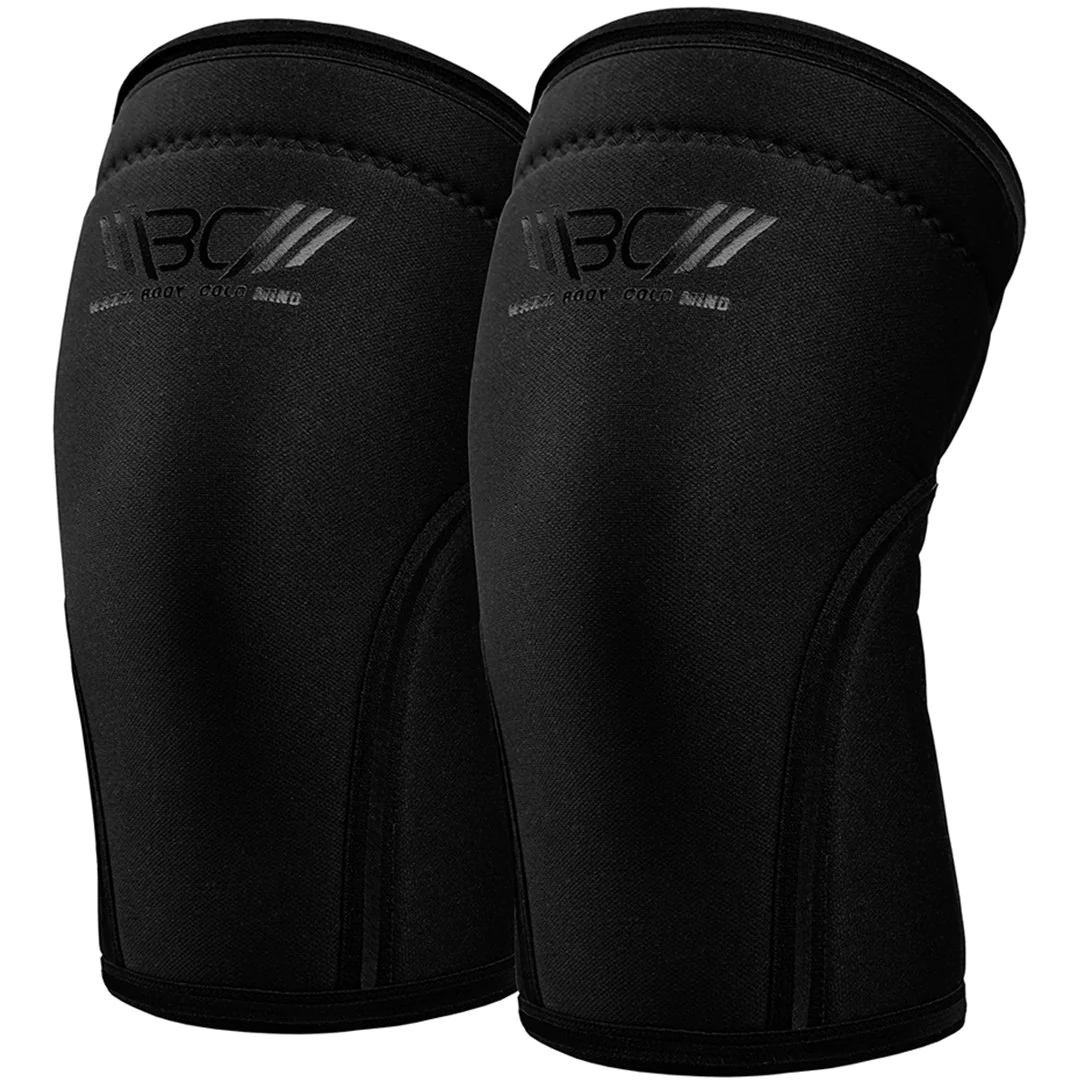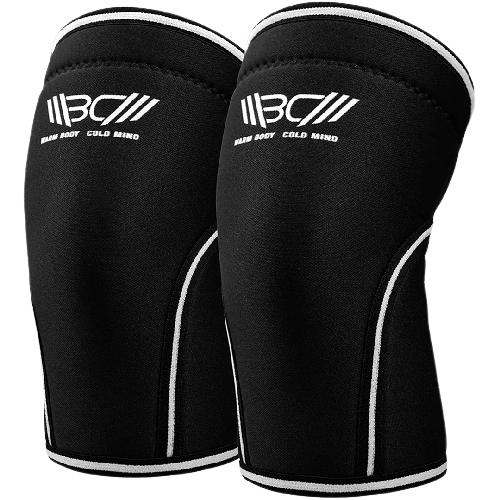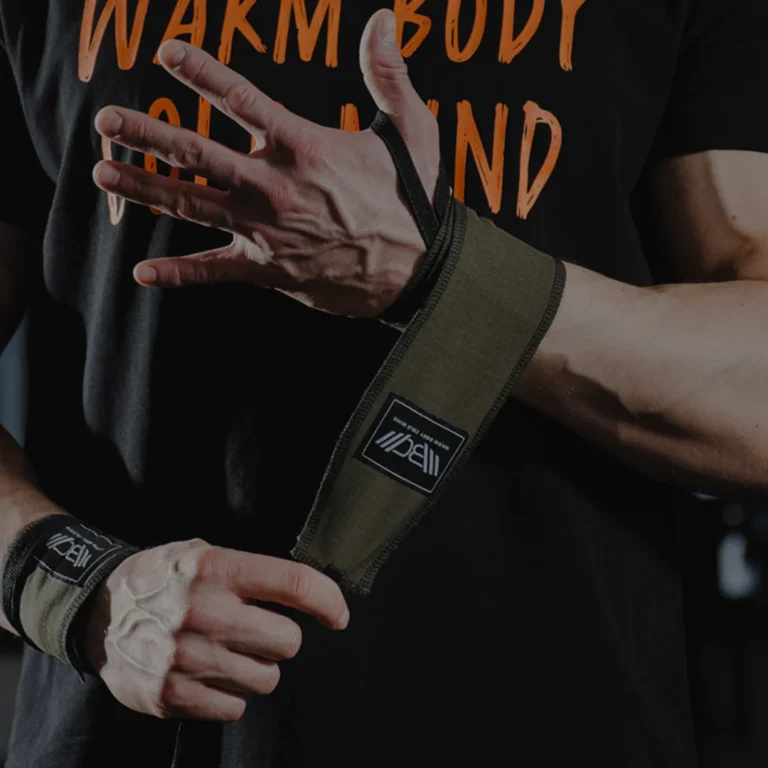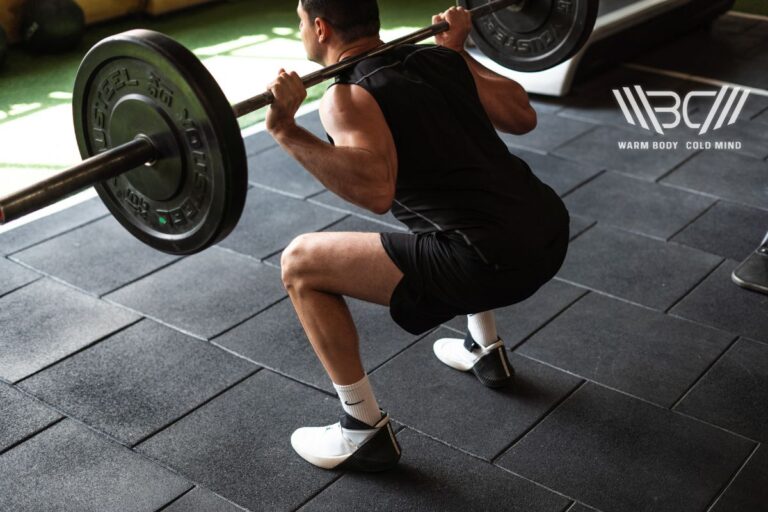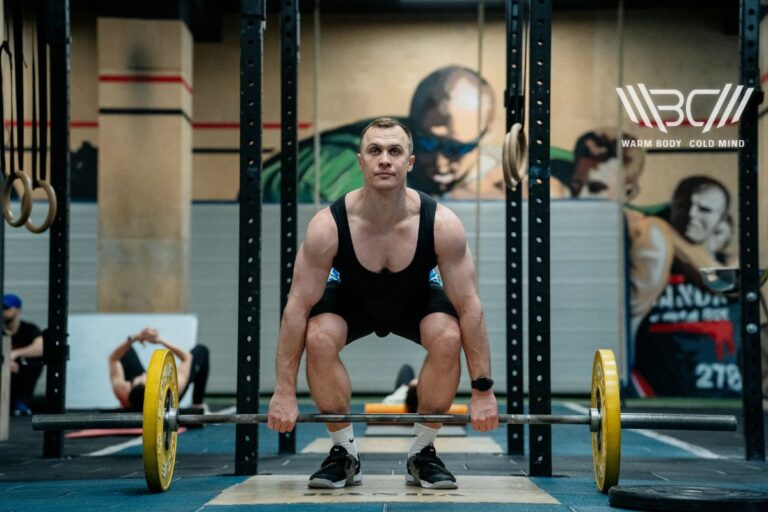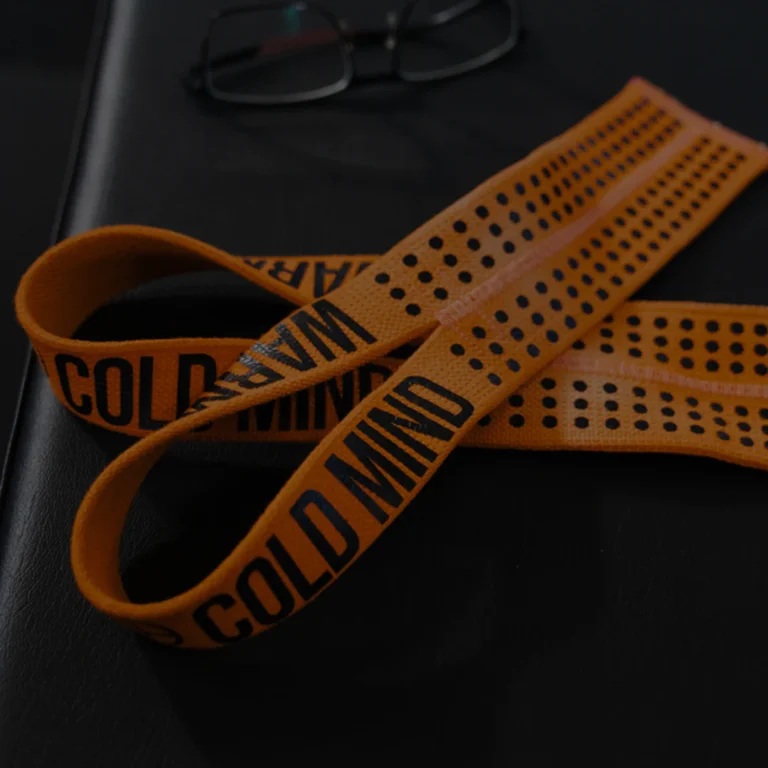Using Knee Sleeves for Deadlift: Yay or Nay?
As athletes grow in skill, they look toward different lifting aids and accessories to continue busting PRs. Being so, Knee sleeves are a popular tool. They’re a pretty much no-brainer while doing squats, thanks to the added joint support and warmth. What about using knee sleeves for deadlifts, then?
Should You Wear Knee Sleeves for Deadlift? – Knee pain is the bogeymen of weight training. However, deadlifting with knee sleeves warms the joint and potentially prevents injuries. Although wearing sleeves is not mandatory, doing so may bring comfort and confidence into your routines.
What are Lifting Sleeves?
Lifting sleeves are one of many supportive gears you can buy to stabilize particular joints under heavy and dynamic lifts. You can find them for your elbows and knees. Sleeves are made of strong, stretchy materials in a tubular shape and multiple sizes. They work by compressing target areas – improving blood flow and movement patterns. Wraps are a heavy-duty alternative, which are just long strips of fabric.
Knee sleeves make a 360-degree enclosure, bringing stability and rigidity to the knee region. compression gear can potentially prevent new injuries as well as the recurrence of previous ones.
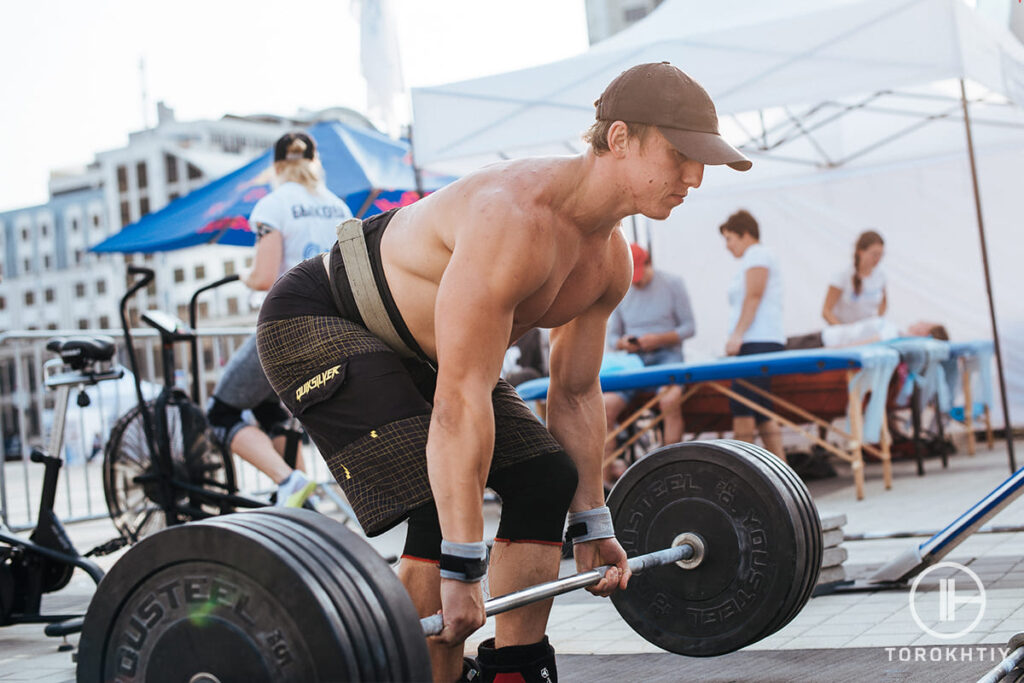
Church et al. (2016), in “a review of the efficacy of weight training aids,” associated many potential performance-enhancing and soreness-reducing effects with joint sleeves and wraps. However, researchers have simultaneously pointed out the scarcity of available studies on this subject.
Will Knee Sleeves Help You Deadlift More?
Pro athletes frequently employ knee covers for their compound lifts. We have mounting evidence in favor of this practice for squats. Neoprene sleeves can increase 1RM performance due to their density and increased tension at the bottom of the lift. One thing that separates novice and advanced lifters is the speed out of the bottom phase.
However, do these benefits persist when using knee sleeves while deadlifting? The short answer is no! Deadlifts don’t demand a knee bend to the same extent like most squats. The deadlift movement is driven more by hips instead of knee extensors. So, how do knee sleeves help deadlift? Here comes the importance of joint support and safety into play.
Benefits of Wearing Knee Sleeves for Deadlift
Choosing knee sleeves for deadlifting will offer several physical and mental benefits that can improve the comfort and potentially the performance of your weight training.
✅ Joint Compression and Warmth
The single undoubted benefit of wearing knee sleeves for deadlifts is that they keep joints warm. The exacting compression and warmth rush blood supply to the knees and surrounding muscles. It also disperses the synovial fluid within the joint, acting as a shock-absorbing lubricant.
Better blood circulation improves the uptake of oxygen and nutrients, which is crucial to ward off muscle fatigue and soreness. Not only do sleeves warm you up for ongoing deadlifting sessions, but prolonged compression to a muscle can potentially aid with muscle recovery as well. Still, a 24-hour rest is advised to recover muscle efficacy completely.
If you take long breaks between sets, especially sitting, your knees might turn cold. Something you don’t want before maximal attempts! Wearing compression sleeves can assist with this problem.

7mm Weightlifting Knee Sleeves
Discover the ultimate support with Warm Body Cold Mind knee sleeves providing stability and comfort.
✅ Better Lifting Technique
Compound movements – like squats, deads, cleans, and snatches – can put excessive pressure on your knee during the concentric phase. Do you unintentionally cave in during the ascent while your trainer shouts: knees out! Having a proper form and finish is significant in targeting the right areas, avoiding injuries, and getting your competitive attempts to count.
Snug-fit sleeves help preserve the structural integrity of joints and ligaments. This allows you to navigate stress throughout the range of motion. In almost all exercises, replicating a specific knee angle is easier with sleeves on versus sleeveless. It breeds unending advantages for your lifting technique. You will most likely have better knee tracking, synergistic lockout, and an ideal pause for glutes and hamstring engagement.
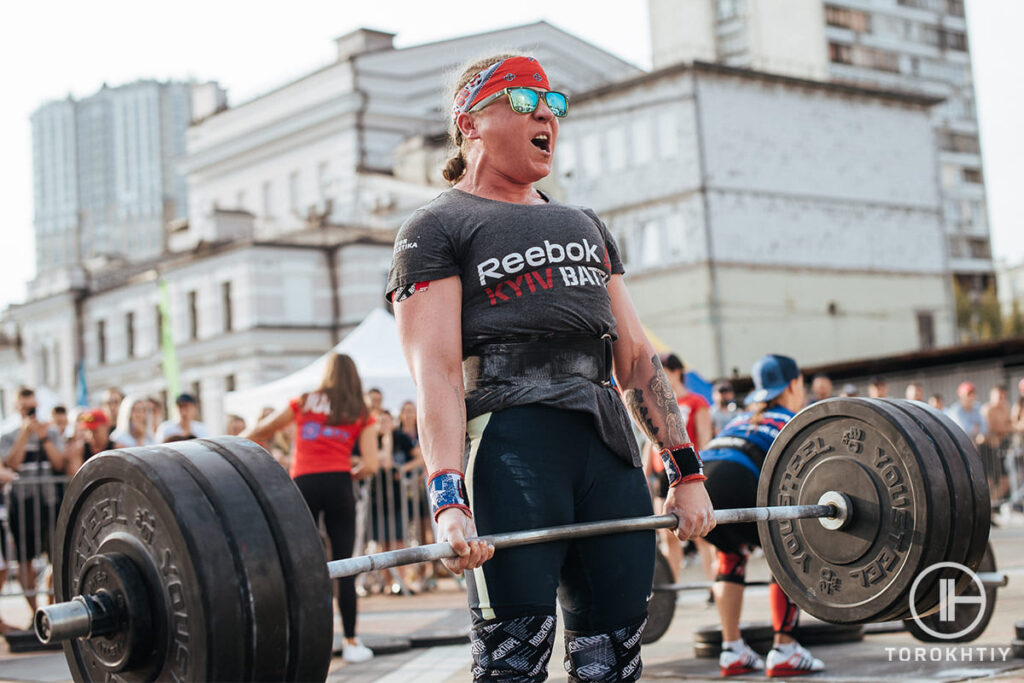
✅ Injury Prevention and Recovery
Elastic or neoprene sleeves are also used as a rehab tool. Laboratory studies have shown improvements in movement patterns, knee joint position sense, ground reaction force, knee-related confidence, balance control system, and gait performance.
There are various perspectives to view the benefits of structural support and stability for your joint. You always have an additional support against twisting or spraining your knee during the lift. On the other hand, they provide previously hurt lifters reassurance and confidence to get their mojo back. Even if you are not immediately stronger, deadlifting with knee sleeves can let you bypass mental blocks.
Possible Drawbacks of Wearing Knee Sleeves for Deadlift
Everything has its pros and cons. Using knee sleeves can cause discomfort, restricted movement, and other complications for some people.
❌ Skin Irritation and Discomfort
Snug-fit garments are prone to pinch and dig into the skin. The barbell may also get snagged on the bottom of the sleeve, making the lift slower and harder. If you go for a loose size, it will keep falling or bunch up in the meantime. Moreover, knee sleeves are useful only when they’re tight enough.

Another rarity with compression garments is skin irritation. The constant rubbing leads to intense sweating and higher skin temp. Those with sensitive skin should remain cautious to cleanliness so as not to develop infections or dermatitis. Also, folks with diabetes and heart disease must consult a doctor beforehand.
❌ Overdependence on Sleeves
Sleeves are there to keep your knees secure and pain-free. You should separately work on the natural strength of your joints and stabilizers. Don’t use sleeves as a cover-up for weakness or a substitute for adequate warm-ups, stretching, and ROM exercises. Remember these training essentials!
A warm-up hikes blood flow and muscle temperature, which positively affects exercise performance and injury prevention. Similarly, performing a cool-down efficiently reset your heart rate after heavy sets.
Our recommendation is intact for all sorts of joint sleeves and wraps. You should never be unable to lift without them, especially when moving submaximal weights.
❌ Cost-Benefit Mismatch
You should conduct a cost-benefit analysis prior to any purchase. Try to strike a balance or, even better, outweigh the benefits of a product against its price. In the case of knee sleeves, there may be a mismatch.
They don’t aid deadlifts with respect to the weight lifted as much as squats and Olympic lifts. The added warmth and compression promise better safety, nonetheless. Some people may lift heavier by plunging across mental plateaus, not physical limitations.
The upfront cost is minimal. If you’re ready to drop a Benjamin, the most expensive pair can sneak into your gym bag. However, the maintenance will test your patience. Sleeves can be quick to get stained and smelly. You may have to hand-wash and air-dry them after every couple of uses. The material can lose its elasticity, contour, or threading over time, warranting a repurchase.
Subscribe!
The latest reviews of must-have home gym training equipment, apparel, and supplements that will enhance your performance and bring you new results.
When Should You Wear Knee Sleeves for Deadlifts?
Knee sleeves are an incredibly versatile and valuable tool. You can use them for running, lunges, leg presses, and weightlifting routines. However, they are not an immediate necessity early on in your fitness journey. Your primary target should be set on improving exercise form and tendon strength.
Once you’re onto the next level and regularly deadlifting heavier weights, knee sleeves will help you stay warm and ready. Even then, try to go sleeveless for your submaximal, off-season endeavors.
However, knee sleeves are almost impossible to put on sweaty legs. You either have them for an entire session or not at all. They’re much different from belts or wrist straps, which actively seek to increase the poundage you can lift via enhanced abdominal pressure or grip strength accordingly.
As long as you’re doing enough warm-ups and mobility drills, the usage of knee sleeves won’t become a crutch. It’s similar to wrapping your hands around your knees, shifting mental focus and awareness toward the area. Plus, reduced breathability keeps joints warm and lubricated. What matters is that you feel comfortable and confident when weights are in your hand.
What to Look For in Knee Sleeves for Deadlifting?
Purchasing knee sleeves for deadlifts is straightforward. You have to figure out the right size, shortlist a few compatible quality products, and finally buy one that fits your budget.
1. Sizing
First of all, grab a measuring tape to know your knee circumference. Wrap it over your kneecap. Note the number in inches or cm; find that in the manufacturer’s reference chart. Generally, sleeves come between 10”-20”. That was the easy part!
The real struggle is choosing the thickness: 7mm vs 5mm. The thicker the sleeve, the stronger the compression and the longer it lasts. You’ll sacrifice much warmth and support with thinner pieces, but they’re less restrictive. After all, it’s a personal choice.
2. Material
Sleeves should be made from neoprene. The material owns excellent resilience and adaptability, thus preferred for swimsuits and compression clothing. However, there may be multiple neoprene grades varying in cost and durability. You’ll indeed find economical variants in spandex and nylon, but they aren’t worth the investment.

The manufacturing process also determines the lifespan of a product. Due to knee sleeves’ recent popularity, various innovative designs and features have been introduced. Reinforced 3D stitching, target pressure zones, contour linings, and anti-slip silicone grips are such trendy additions. These tech twists improve the fit, support, moisture resistance, and durability.
3. Specifications
You should check out the rulebook of a contest you’re preparing for. What if your favorite sleeves aren’t allowed at the last minute? IWF permits only 100% neoprene-made sleeves with a 30cm max length. IPF and USAPL have approved a bunch of companies that manufacture up to 7mm thick knee sleeves for deadlifts.
In functional and cross-training meets, the Head Judge or coordinators specify rules on the floor. Lastly, strongman sports have the most relaxed regulations concerning attire.
Mostly, you’ll get the green signal with sleeves on. Try 7mm variants first. They are better at providing warmth and compression. Also, they maintain the original shape and size for a longer period. Nonetheless, many lifters go for thinner models for versatile and seamless movement.
Knee Sleeves We Recommend – Warm Body Cold Mind Weightlifting Knee Sleeves
WBCM Weightlifting Knee Sleeves are a go-to option to smash a variety of lifts. They’re made of 1/4″ pure neoprene material, available in six sizes and three color schemes. The maximum length is 29cm. It creates medical-grade support for your knees thanks to anatomical and non-slip construction. The possible uses extend to weight training, cardio, and beyond.
What Is Better for Deadlifts: Wraps or Sleeves?
Knee wraps and sleeves are different. They differ in key features: flexibility, comfort, ease of use, and degree of compression. Wrapping is more complex than sliding your foot through a loop. However, wraps contain much higher compression and restriction. Research has shown that their elastic energy can increase peak vertical squatting power by 10%. The elastic recoil propels athletes upward in squats.
However, deadlifts require significantly less flexion. Due to this, wearing knee wraps for deadlifts doesn’t make much sense. Between knee sleeves and wraps, sleeves would be the better option.
How to Wear Knee Sleeves for Deadlifts?
Knee sleeves are supposed to be snug. Getting them on can be trickier than pulling your pants. Start by folding it in half as you sit down. Then, slide the sleeve onto your calf until its folded top edge sits just below your kneecap. That’s where you should unfold. See, there are no wrinkles. Your knee and surrounding musculature must be entirely covered with even all-round compression.
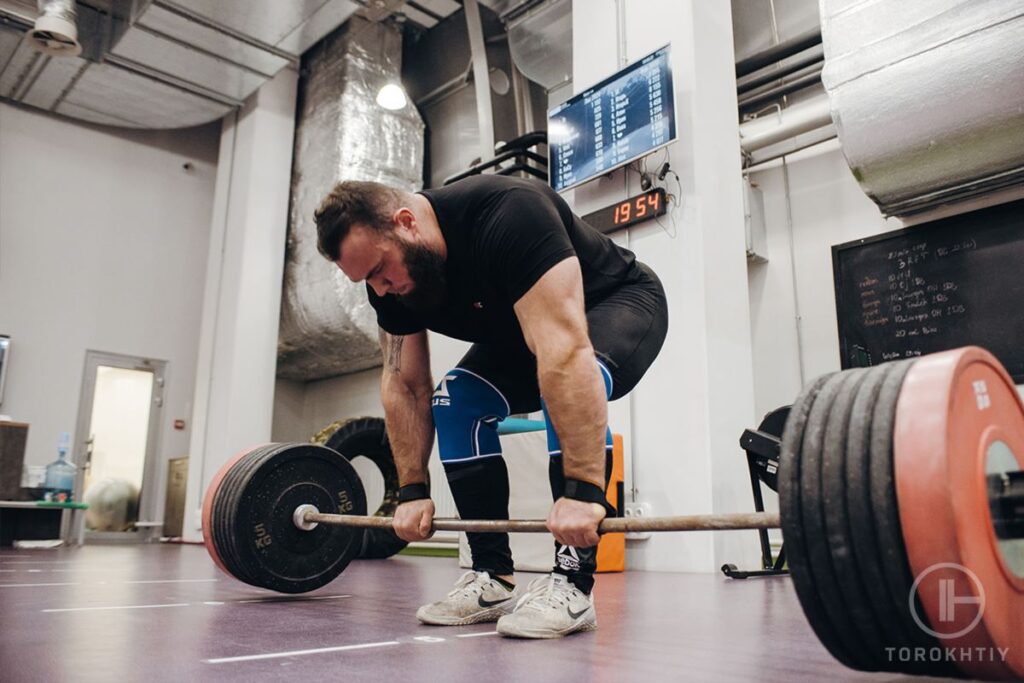
As discussed earlier, sleeves accumulate sweat and dirt. Consult the manufacturer for product care. Mostly, you’ll have to wash them with some gentle soap or detergent. Exposure to direct sunlight or chemicals can shorten the useful life.
FAQ
Are Knee Sleeves Considered Cheating?
Nope! Knee sleeves are a protective gear that aid in joint safety. They’re allowed in almost every weightlifting or powerlifting competition. They don’t confer any mechanical advantage to lift heavier during the deadlift, barring the increase in self-confidence. Although the deadlift weight won’t go up, squats will improve with sleeves.
Do Knee Sleeves Weaken Knees?
The failure to access a complete range of motion can cause atrophy to more experienced lifters. However, knee sleeves don’t alter joint kinetics. In fact, compression gear such as knee sleeves and knee wraps have been recently associated with diminished lower extremity muscle development in relation to the squat.
Should You Use Knee Wraps for Deadlifts?
Knee wraps act like a spring, storing tension as you get down to the ground and releasing with an upward motion. Exercises like squats get a lot of assistance with wraps. The movement of deadlifts is dictated by hips, not knees. Therefore, posterior chain oriented lifts like deadlifts would not benefit much if at all from wraps.
Conclusion
Picking up knee sleeves for deadlifts can be a great purchase. At worst, it doesn’t interfere with your training and you’ll be a little warmer than usual. At best, you’ll enjoy the added support and compression – which in turn enhances knee-related confidence, stability, and pain relief.
What’s your can’t-miss lifting accessory? Use the comment section to let us peek in your gym bag.
References:
- Church, James B. et al., “A Review of the Efficacy of Weight Training Aids,” Strength and Conditioning Journal 38(3):p 11-17, June 2016
- Machek, Steven B. et al., “Neoprene Knee Sleeves of Varying Tightness Augment Barbell Squat One Repetition Maximum Performance Without Improving Other Indices of Muscular Strength, Power, or Endurance,” Journal of Strength and Conditioning Research 35():p S6-S15, February 2021
- Wendy M Miletello et al., “A biomechanical analysis of the squat between competitive collegiate, competitive high school, and novice powerlifters,” J Strength Cond Res. 2009 Aug;23(5):1611-7
- Kevin H Choe et al., “Hip and Knee Kinetics During a Back Squat and Deadlift,” J Strength Cond Res. 2021 May 1;35(5):1364-1371
- Wei-Hsien Hong et al., “Effects of compression garment on muscular efficacy, proprioception, and recovery after exercise-induced muscle fatigue onset for people who exercise regularly,” PLoS ONE 17(2): e0264569
- Trevor B. Birmingham et al., “Effect of a Neoprene Sleeve on Knee Joint Position Sense During Sitting Open Kinetic Chain and Supine Closed Kinetic Chain Tests,” The American Journal of Sports Medicine, Volume 26, Issue 4, First published July 1998
- Gisela Sole et al., “Immediate and six-week effects of wearing a knee sleeve following anterior cruciate ligament reconstruction on knee kinematics and kinetics: a cross-over laboratory and randomized clinical trial,” BMC Musculoskelet Disord. 2022; 23: 560. Published online 2022 Jun 10
- Péter Bakonyi et al., “Study on the Compression Effect of Clothing on the Physiological Response of the Athlete,” Materials (Basel). 2022 Jan; 15(1): 169. Published online 2021 Dec 27
- Hyoung-Kil Park et al., “The effect of warm-ups with stretching on the isokinetic moments of collegiate men,” J Exerc Rehabil. 2018 Feb; 14(1): 78–82. Published online 2018 Feb 26
- Lake, Jason P. et al., “Wearing Knee Wraps Affects Mechanical Output and Performance Characteristics of Back Squat Exercise,” Journal of Strength and Conditioning Research 26(10):p 2844-2849, October 2012
- Jonathan Sinclair et al., “Acute effects of knee wraps/sleeve on kinetics, kinematics and muscle forces during the barbell back squat,” Sport Sciences for Health volume 16, pages 227–237 (2020)
Author: Sergii Putsov
PhD in Sport Science, Olympic weightlifting, Strength & Conditioning coach and fitness expert
Sergii Putsov is a professional weightlifter with over 20 years of experience and multiple national medals. He was a member of the National weightlifting team, competing in the 94 kg weight class. Sergii holds a master’s degree in Olympic & Professional Sport Training and a Ph.D. in Sport Science. After his athletic career, Sergii transitioned into coaching and is now responsible for designing training programs, writing blog articles, providing live commentary for international weightlifting competitions, and hosting sport and fitness seminars worldwide.


